-
 bitcoin
bitcoin $102877.190955 USD
1.88% -
 ethereum
ethereum $3430.435064 USD
4.52% -
 tether
tether $0.999264 USD
-0.05% -
 xrp
xrp $2.307310 USD
4.49% -
 bnb
bnb $987.740692 USD
3.82% -
 solana
solana $161.947760 USD
3.97% -
 usd-coin
usd-coin $0.999712 USD
-0.05% -
 tron
tron $0.292810 USD
2.93% -
 dogecoin
dogecoin $0.179738 USD
10.70% -
 cardano
cardano $0.580716 USD
8.75% -
 hyperliquid
hyperliquid $42.463448 USD
8.40% -
 chainlink
chainlink $15.763437 USD
7.05% -
 zcash
zcash $649.595636 USD
17.21% -
 bitcoin-cash
bitcoin-cash $511.610261 USD
7.19% -
 stellar
stellar $0.292537 USD
7.91%
How does EMV perform in a breakthrough market? How will the indicator react to a false breakthrough?
EMV indicator, developed by Richard W. Arms, Jr., helps traders assess price and volume dynamics in breakthrough markets, signaling true or false breakouts.
May 23, 2025 at 06:01 pm
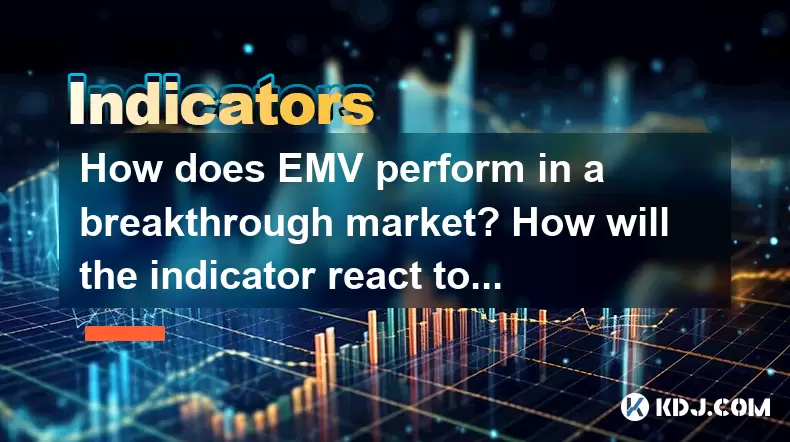
Introduction to EMV Indicator
The Ease of Movement Value (EMV) indicator is a technical analysis tool that helps traders identify the relationship between price and volume in the cryptocurrency market. Developed by Richard W. Arms, Jr., the EMV indicator aims to measure the 'ease' with which prices move. In a breakthrough market, understanding how EMV performs can provide valuable insights into potential price movements and market dynamics. This article will delve into the performance of EMV in a breakthrough market and how it reacts to false breakthroughs.
Understanding EMV in Breakthrough Markets
A breakthrough market, often referred to as a breakout market, is characterized by prices moving beyond established support or resistance levels. In such scenarios, the EMV indicator can offer a unique perspective on the strength and sustainability of the breakout. The EMV is calculated using the following formula:
[ \text{EMV} = \frac{\text{Price Change}}{\text{Volume Change}} \times \frac{\text{Volume}}{\text{Box Ratio}} ]
Where:
- Price Change is the difference between the current period's high and low prices.
- Volume Change is the difference between the current period's volume and the previous period's volume.
- Box Ratio is a scaling factor, typically set to 10000.
In a breakthrough market, a rising EMV suggests that prices are moving upward with relative ease, indicating strong buying pressure. Conversely, a falling EMV during a breakout could signal that the upward movement is being met with significant resistance, hinting at a potential false breakthrough.
EMV's Reaction to True Breakthroughs
When a true breakthrough occurs, the EMV indicator typically exhibits a sustained increase. This reflects the ease with which prices are moving through established resistance levels. For instance, if Bitcoin breaks through a significant resistance level at $50,000, and the EMV shows a consistent upward trend, it reinforces the strength of the breakout. Traders can use this information to confirm their bullish positions and potentially enter new trades.
To interpret EMV in the context of a true breakthrough, traders should:
- Monitor the EMV trend: A consistent rise in EMV over several periods suggests a strong and sustainable breakthrough.
- Compare EMV with price action: Ensure that the EMV's upward trend aligns with the price breaking through resistance levels.
- Use EMV in conjunction with other indicators: Combine EMV with indicators like the Relative Strength Index (RSI) or Moving Average Convergence Divergence (MACD) to validate the strength of the breakout.
EMV's Reaction to False Breakthroughs
False breakthroughs, or fakeouts, occur when prices temporarily move beyond a support or resistance level but fail to sustain the movement. In such cases, the EMV indicator can provide early warning signs of a potential reversal. A sudden spike in EMV followed by a sharp decline often indicates a false breakthrough. For example, if Ethereum briefly surpasses a resistance level at $3,000 but the EMV quickly drops, it suggests that the breakout lacks the necessary buying pressure to be sustainable.
To identify a false breakthrough using EMV, traders should:
- Watch for erratic EMV movements: A rapid increase followed by a sharp decrease in EMV can signal a false breakthrough.
- Analyze volume patterns: Low volume during the breakout, coupled with a declining EMV, is a red flag for a potential false breakthrough.
- Cross-verify with other indicators: Use tools like Bollinger Bands or the Average True Range (ATR) to confirm the lack of momentum behind the breakout.
Practical Application of EMV in Breakthrough Scenarios
To effectively use the EMV indicator in breakthrough scenarios, traders must follow a systematic approach. Here’s how to apply EMV in real-time trading:
- Identify key support and resistance levels: Use historical price data to pinpoint critical levels that the cryptocurrency has struggled to break through in the past.
- Set up EMV on your trading platform: Ensure that the EMV indicator is correctly configured on your chosen trading platform, with the box ratio set to 10000.
- Monitor EMV alongside price action: As the price approaches a key level, closely watch the EMV for signs of ease or difficulty in the price movement.
- React to EMV signals: If the EMV rises steadily as the price breaks through resistance, consider it a confirmation of a true breakthrough. If the EMV spikes and then falls, be cautious of a potential false breakthrough.
- Adjust trading strategies accordingly: Use the EMV's signals to enter or exit trades, set stop-loss orders, and manage risk based on the strength or weakness of the breakthrough.
Case Study: EMV in Action
To illustrate the practical application of EMV in a breakthrough market, let's consider a hypothetical scenario involving Bitcoin. Suppose Bitcoin is approaching a significant resistance level at $60,000. As the price nears this level, traders observe the following:
- Price action: Bitcoin's price briefly surpasses $60,000 but then pulls back.
- EMV behavior: The EMV spikes as the price breaks through $60,000 but quickly declines as the price falls back below the resistance level.
In this case, the EMV's behavior suggests a false breakthrough. Traders who were monitoring the EMV would have been cautious about entering bullish positions and might have opted to wait for a more sustained breakout.
Frequently Asked Questions
Q1: Can EMV be used as a standalone indicator for trading decisions?While the EMV can provide valuable insights into the ease of price movement, it is generally recommended to use it in conjunction with other technical indicators. Relying solely on EMV might lead to false signals, especially in volatile cryptocurrency markets. Combining EMV with indicators like RSI, MACD, or volume analysis can enhance the accuracy of trading decisions.
Q2: How does EMV handle high-frequency trading environments in cryptocurrencies?In high-frequency trading environments, the EMV indicator can be particularly useful due to its sensitivity to price and volume changes. However, traders should be aware that the rapid fluctuations in price and volume might lead to more volatile EMV readings. Adjusting the box ratio or using shorter time frames for EMV calculations can help adapt the indicator to high-frequency trading.
Q3: Is there a specific time frame that works best for EMV analysis in breakthrough markets?The effectiveness of EMV can vary depending on the time frame used. For short-term trading, shorter time frames like 5-minute or 15-minute charts might be more suitable for capturing quick changes in price and volume. For longer-term analysis, daily or weekly charts can provide a broader perspective on the sustainability of breakouts. Traders should experiment with different time frames to find what works best for their trading style and the specific cryptocurrency they are analyzing.
Q4: How can traders differentiate between a true breakthrough and a false breakthrough using EMV?To differentiate between true and false breakthroughs using EMV, traders should focus on the consistency and sustainability of the EMV trend. A true breakthrough is typically accompanied by a sustained rise in EMV, indicating strong buying pressure. In contrast, a false breakthrough often results in a rapid spike followed by a sharp decline in EMV, suggesting a lack of momentum. Additionally, analyzing volume patterns and using other technical indicators can help confirm the nature of the breakthrough.
Disclaimer:info@kdj.com
The information provided is not trading advice. kdj.com does not assume any responsibility for any investments made based on the information provided in this article. Cryptocurrencies are highly volatile and it is highly recommended that you invest with caution after thorough research!
If you believe that the content used on this website infringes your copyright, please contact us immediately (info@kdj.com) and we will delete it promptly.
- Ripple (XRP) in 2026: Hold or Fold? A Look at XRP's Future and Emerging DeFi Alternatives
- 2025-11-08 18:35:01
- Zcash ZEC Coin Price Explosion: From Privacy Niche to Center Stage
- 2025-11-08 18:55:01
- Berachain Price Prediction: Navigating the Honeycomb Hype in Crypto
- 2025-11-08 18:55:01
- Arthur Hayes, Gold, and Bitcoin: A Modern Monetary Trinity?
- 2025-11-08 19:15:01
- Shiba Inu's Next Move: Navigating a Shifting Market
- 2025-11-08 19:20:01
- Pakistan's Crypto Crossroads: Balancing Opportunity with Asset-Backed Realities
- 2025-11-08 19:20:01
Related knowledge
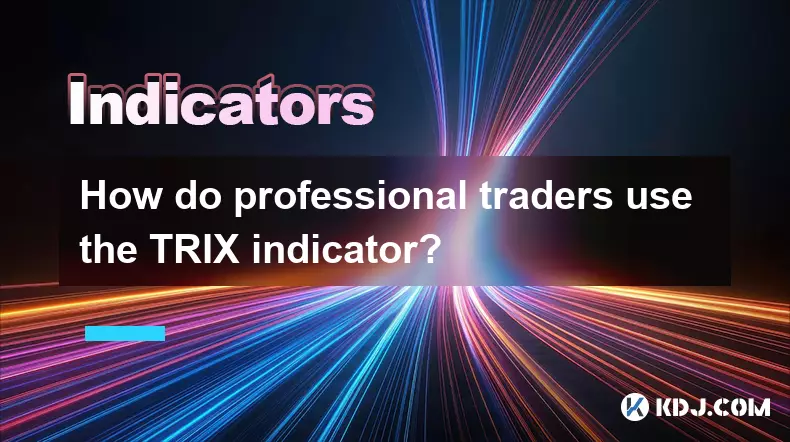
How do professional traders use the TRIX indicator?
Nov 06,2025 at 04:40pm
Understanding the TRIX Indicator in Crypto TradingThe TRIX (Triple Exponential Average) indicator is a momentum oscillator used by professional trader...
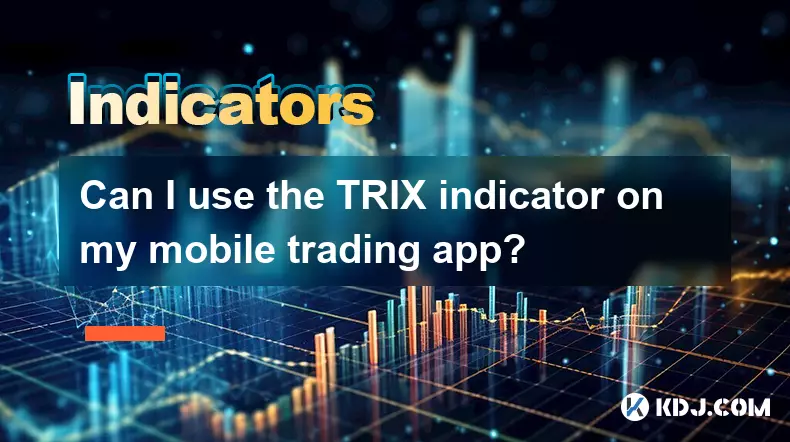
Can I use the TRIX indicator on my mobile trading app?
Nov 07,2025 at 07:40pm
The TRIX indicator, a momentum oscillator designed to filter out short-term fluctuations and highlight long-term trends, has become increasingly popul...
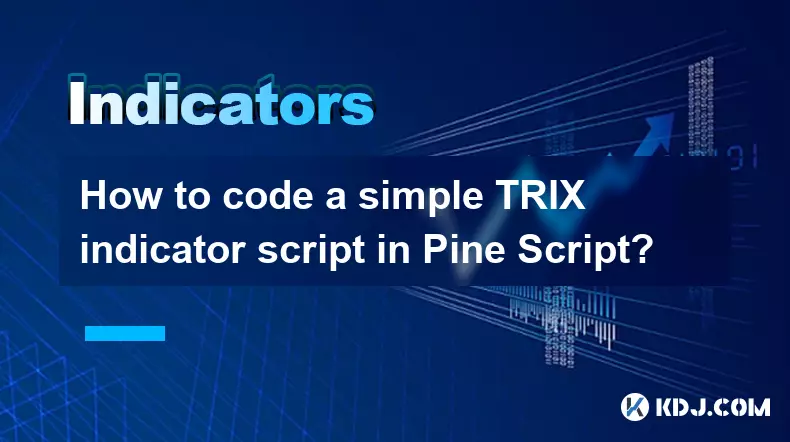
How to code a simple TRIX indicator script in Pine Script?
Nov 07,2025 at 06:20am
How to Code a Simple TRIX Indicator in Pine Script The TRIX (Triple Exponential Moving Average) indicator is widely used in cryptocurrency trading to ...
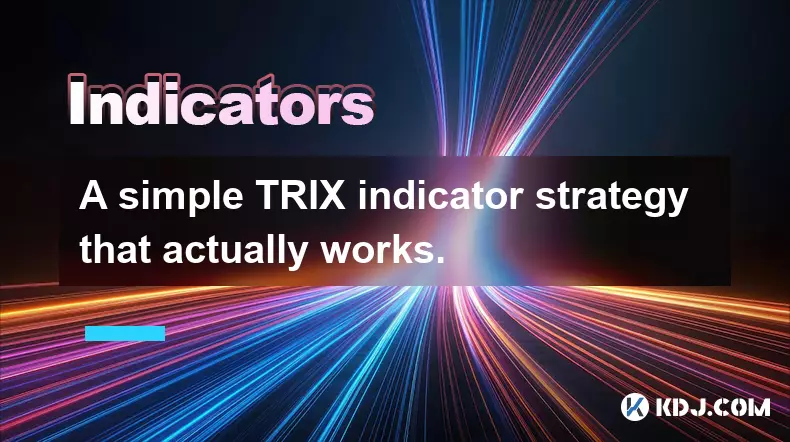
A simple TRIX indicator strategy that actually works.
Nov 08,2025 at 05:39pm
Understanding the TRIX Indicator in Crypto Trading1. The TRIX (Triple Exponential Average) indicator is a momentum oscillator designed to filter out s...
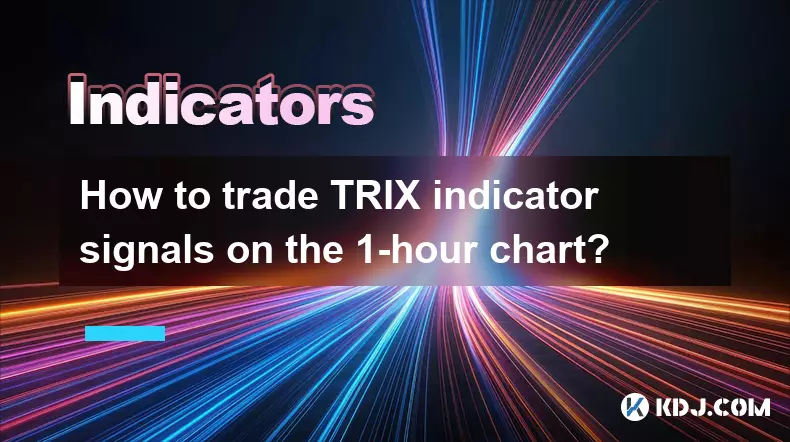
How to trade TRIX indicator signals on the 1-hour chart?
Nov 07,2025 at 05:39am
Bitcoin's Role in Decentralized Finance1. Bitcoin remains the cornerstone of decentralized finance, serving as a benchmark for value and security acro...
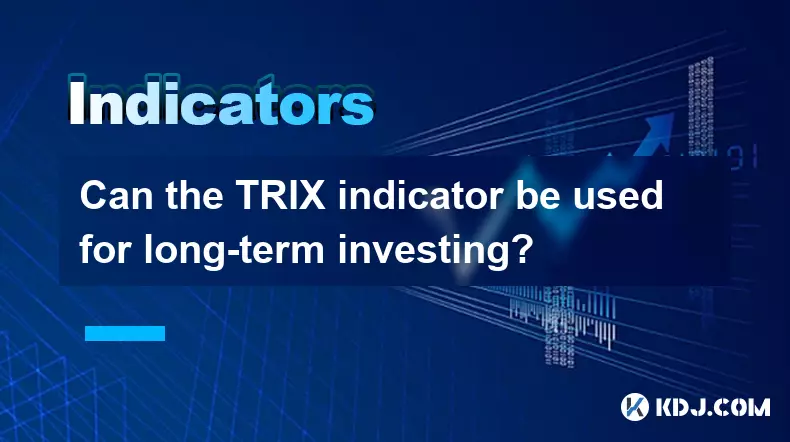
Can the TRIX indicator be used for long-term investing?
Nov 06,2025 at 02:19pm
Understanding the TRIX Indicator in Cryptocurrency Markets1. The TRIX (Triple Exponential Average) indicator is a momentum oscillator designed to filt...

How do professional traders use the TRIX indicator?
Nov 06,2025 at 04:40pm
Understanding the TRIX Indicator in Crypto TradingThe TRIX (Triple Exponential Average) indicator is a momentum oscillator used by professional trader...

Can I use the TRIX indicator on my mobile trading app?
Nov 07,2025 at 07:40pm
The TRIX indicator, a momentum oscillator designed to filter out short-term fluctuations and highlight long-term trends, has become increasingly popul...

How to code a simple TRIX indicator script in Pine Script?
Nov 07,2025 at 06:20am
How to Code a Simple TRIX Indicator in Pine Script The TRIX (Triple Exponential Moving Average) indicator is widely used in cryptocurrency trading to ...

A simple TRIX indicator strategy that actually works.
Nov 08,2025 at 05:39pm
Understanding the TRIX Indicator in Crypto Trading1. The TRIX (Triple Exponential Average) indicator is a momentum oscillator designed to filter out s...

How to trade TRIX indicator signals on the 1-hour chart?
Nov 07,2025 at 05:39am
Bitcoin's Role in Decentralized Finance1. Bitcoin remains the cornerstone of decentralized finance, serving as a benchmark for value and security acro...

Can the TRIX indicator be used for long-term investing?
Nov 06,2025 at 02:19pm
Understanding the TRIX Indicator in Cryptocurrency Markets1. The TRIX (Triple Exponential Average) indicator is a momentum oscillator designed to filt...
See all articles





















![The Graph Price Prediction [GRT Crypto Price News Today] The Graph Price Prediction [GRT Crypto Price News Today]](/uploads/2025/11/07/cryptocurrencies-news/videos/690d4df44fe69_image_500_375.webp)



















































